Samsung Unveils 32-Inch Ultra High-Definition Monitor
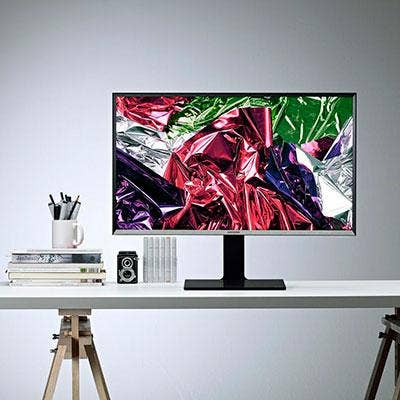
The UHD Bar
Ultra high-definition monitors are coming, and Samsung has set the bar. The company today unveiled the UD970, doubling the number of products in Samsung's line of ultra high-definition monitors for the enterprise. Like the UD590, its 28-inch counterpart that lists for $599, pricing of the new 31.5-inch UHD display also is aggressive. The larger model is expected to sell for around $1,999 and includes features usually reserved for far costlier products. The CRN Test Center was invited to take a look during a confidential briefing ahead of today's launch, and was impressed with what Samsung will be offering.
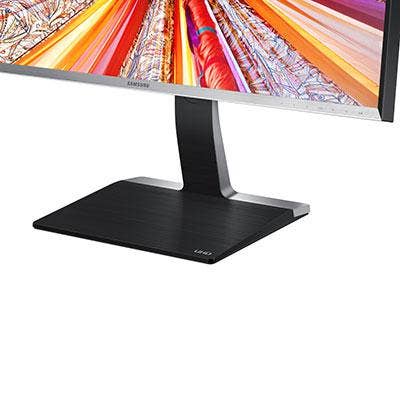
Physical Attributes
The UD970 is shipped with its stand pre-attached, so there's no assembly time to spend and no parts to misplace or damage. Its sturdy and versatile pedestal stand lets the screen move in four different directions. There's 30 degrees of left-right swivel, 25 degrees of up-down tilt, a 90-degree pivot and an up-down range of more than five inches. In landscape mode, the display at its lowest stands 19.3 inches above the desktop and is 28.7 inches wide. It stands 24.4 inches at its highest. The rectangular base is 11 inches deep. Settings are controlled with physical buttons along the lower right-hand edge and are accompanied by on-screen indicators that describe the function at hand.
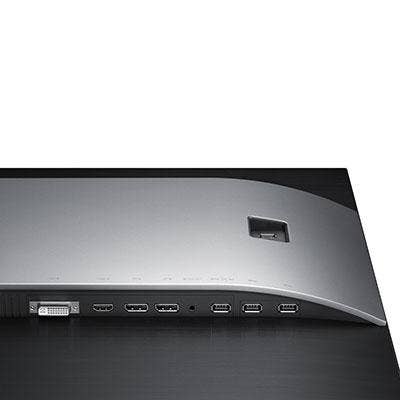
Inputs
Ultra high-definition monitors display 3,820 x 2,160 pixels, which doubles the horizontal and vertical resolution of today's 1,920 x 1,080 HD monitors. Shown here are the UD970's four video inputs, which (from the left to right) are a dual-link DVI, HDMI 1.4 and a pair of DisplayPort 1.2 inputs. Downward orientation helps to simplify management of wall-mounted installations. The UD970 can be driven through the HDMI port at 30Hz and at 60Hz by the DVI and DisplayPort inputs. The monitor features dual- and quad-split picture-by-picture modes, the latter permitting all four video sources to be visible at once, each occupying a quarter of the screen with up to 1,920 x 1,080. Also shown are five USB 3.0 ports (including one input and two super-charging outputs) and a headphone jack. There's also a picture-in-picture mode.
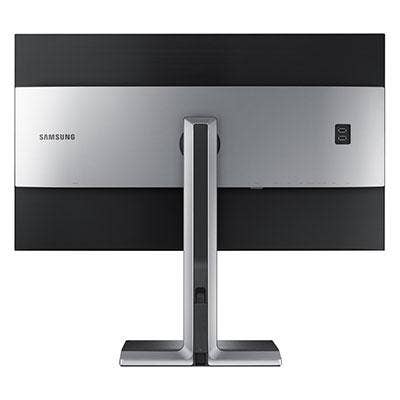
Wall Mounting
Beyond what's up front, Samsung innovation also is in evidence around back. The silver-gray panel shown here pops off easily without tools to expose the VESA 100 mounting holes that attach monitor to stand. Four screws are easily removed and used for wall mounting or for attaching the included VESA 400 adapter. The panel easily snaps back on to finish the look. Samsung also includes one cable each for DisplayPort, DVI and HDMI inputs. Notice also the cable routing hole near the base of its stand.
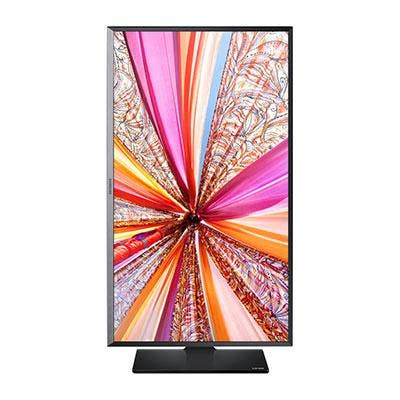
Portrait Mode
Digital designers, engineers, CAD/CAM workers and medical imagers might wish to orient the screen vertically at times. The UD970 has that covered with the ability to pivot the screen 90 degrees to best match the content. Samsung provides drivers for Mac OS X and Windows.
"Even programmers and web coders could benefit from ultra high definition because it displays more lines of code on the screen at once," said Ramseen Evazians, Samsung's manager of commercial displays, during the briefing in New York City.
But according to Bob Venero, president and founder of Future Tech Enterprises, there's also a downside to UHD monitors. "These monitors go well in engineering and CAD applications, but the challenge for doing standard work tasks like email on the same monitor is that the fonts are too small to read," he said.
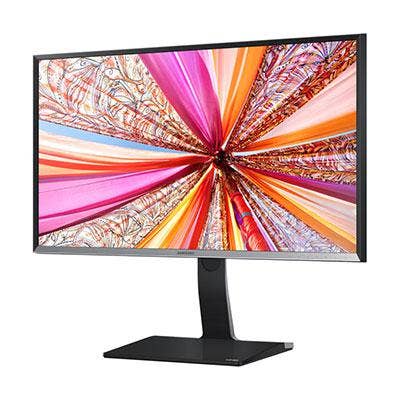
Tech Specs
The UD970's LED-lit panel employs the plane-to-line switching (PLS) technology, which is Samsung's version of IPS. Its 10-bit color depth can display 1.07 billion colors and represent 100 percent of the sRGB color spectrum and 99.5 percent of Adobe RGB. Its eight factory calibration settings (plus three user-programmable modes) give Samsung monitors "the ability to display accurate color across a series of calibrated monitors," claimed Evazians. If being used to display UHD content, Evazians said that just about any graphics card can be used. "But for rendering, 3D imaging and graphical simulations with full-resolution details, a card costing $500 and $700 would be required." The UD970 will begin shipping to distributors and online retailers later this month and becomes widely available in early October.